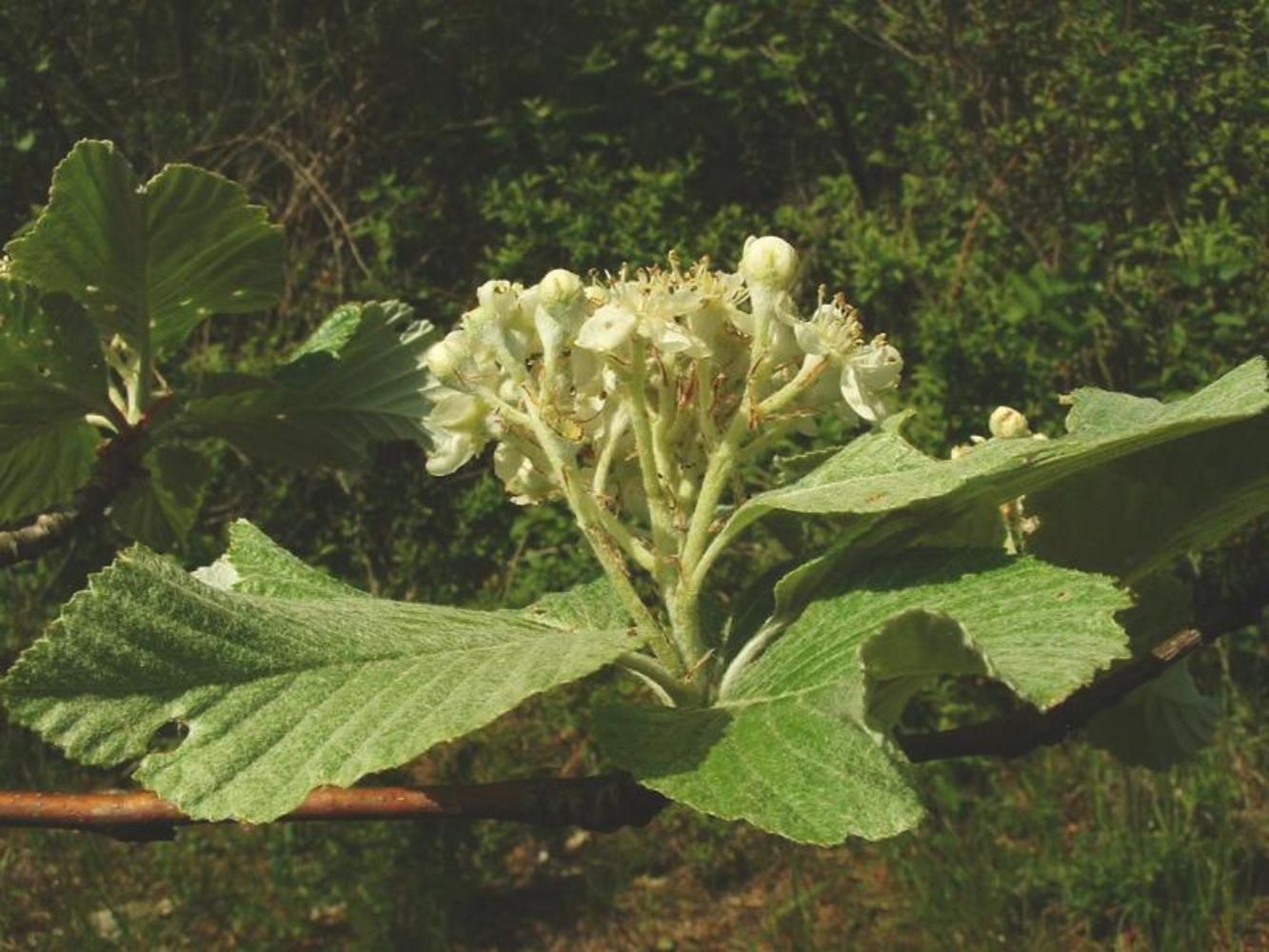Sex in Sorbus Species - Planet Earth Online
Interview with
Best known for Brunel's Clifton Suspension Bridge, the Avon Gorge in Bristol, southwest England is also home to several unique species of plants.
Some tree species here - varieties of sorbus - are found nowhere else in the world and have evolved through an unusual reproductive process.
Planet Earth Podcast presenter Richard Hollingham clambered down a steep path into the wooded gorge to talk to Mandy Leivers from the Avon Gorge and Downs Wildlife Project, and Simon Hiscock a Professor of Botany at the University of Bristol.
Richard started by asking Simon how to spot a sorbus tree...
Simon - Its common name is white beam because of the colour of the leaves in the spring. They are members of a big family - the rose family - rosacea.
Richard - So point some out to me. Where is one?
Simon - Just up there, there is one of the rare ones that we only find in the gorge, Sorbus bristoliensis, and also over here Sorbus wilmotiana, which is another endemic to the gorge.
Richard - So they are spindly trees and the leaves at the top-
Simon - The leaves are quite pale-ish up at the top and they are falling at the moment and they have this white tinge which is much more pronounced in the spring when they first come out.
Richard - So what is special about them? What makes them different?
 Simon - Well, what's special about the ones in the Avon Gorge is that we've got a process of evolution going on here that is constantly generating new genotypes, new species through processes of hybridisation. This is when two distinct either species or micro species cross pollinate to make hybrid seed. The hybrids reproduce principally by a sexual reproduction making seeds without sex and then every so often there's a leaky bit of sex involved back crossing to one of the sexuals or to another form and this then generates hybrids which are then maintained by asexual reproduction so it's a very fluid process.
Simon - Well, what's special about the ones in the Avon Gorge is that we've got a process of evolution going on here that is constantly generating new genotypes, new species through processes of hybridisation. This is when two distinct either species or micro species cross pollinate to make hybrid seed. The hybrids reproduce principally by a sexual reproduction making seeds without sex and then every so often there's a leaky bit of sex involved back crossing to one of the sexuals or to another form and this then generates hybrids which are then maintained by asexual reproduction so it's a very fluid process.
Richard - So, Mandy, in terms of the area here, not just the individual species, how important is this in terms of conversation terms?
Mandy - Well, the Avon gorge is considered to be one of the top three sites for rare plants in England. There are 27 nationally rare and scarce plants that grow here, so it is internationally important as a special area of conservation and also nationally as a Site of Special Scientific Interest.
Richard - I have to say it doesn't look - it's pleasant, but it doesn't look particularly special.
Mandy - Well, a lot of the plants that grow here have been growing here for a very, very long time and most of them are very, very small. The white beams are really an exception. So things like the Bristol onion and the Bristol rock-cress which just grow here and nowhere else in the rest of the country, but they all belong to a community of limestone grassland plants and that's what's particularly important about the Avon Gorge.
Richard - What difference has it made having science underlying the work here?
Mandy - It's always been very traditional for conversationalists to just go out and remove bramble, ivy and trees if they're threatening grassland plants and we've been working with the University to look at how science can help us make better decisions when we're managing the area.
Simon - So the curious finding that we've made is that these new hybrids, which can be different numbers of chromosomes compared to the parents, although they're reproducing asexually, producing seeds without sex, they do need pollination in order to drive and trigger the asexual formation of seeds. So this is quite curious and we've found that among the rare hybrid species like Sorbus bristoliensis and Sorbus wilmotiana, this is being driven not by their own pollen buy by pollen from another species particularly Sorbus aria the original parent. So these asexual plants, these rare plants need to be pollinated by another Sorbus in order for them to set their asexual seed. It's very complicated but the key finding is that Sorbus aria is important for providing the pollen that triggers the asexual seed set. So we've got to preserve enough Sorbus aria in the gorge, even though it's very, very common, we've still got to look after it in order to drive the reproductive process of the rare endemics and further their survival.
Richard - So they're all still interlinked even though they're separate species?
Simon - Yes. This is a new idea in conservation and wild life management with these plants is that you preserve the process rather than necessarily rare plants themselves.









Comments
Add a comment